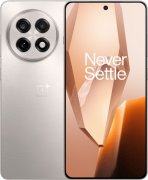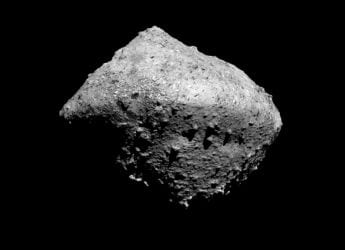- Home
- Internet
- Internet Features
- Meet Michelle Simmons, the Woman Leading the Race to Build World's First Quantum Computer
Meet Michelle Simmons, the Woman Leading the Race to Build World's First Quantum Computer

Photo Credit: University of New South Wales
A team of Australian scientists has made great strides towards building the world's first quantum computer, using mostly standard silicon technology. The team is led by 50-year-old Michelle Simmons, a mother of three.
It is believed that the quantum computing technology could help address major global challenges like climate change and understanding complex diseases such as cancer.
"We're hoping to actually build computers here in Australia that will be able to do calculations in real time that would otherwise take thousands of years," Simmons, Professor at University of New South Wales (UNSW) Sydney, said in statement.
The winner of the coveted 2018 Australian of the Year award leads a team of more than 200 researchers at eight universities across the country developing a cache of quantum computing technologies.
In the quantum world, every time a quantum bit (qubit) is added, the amount of information is doubled.
"If I can get to 300 qubits, there's a prediction that it's more than all the atoms in the universe working together as a calculation," Simmons said, adding that her team is the only one in the world that can manipulate individual atoms to make atomically precise electronic devices.
The progress made by the UNSW research programme has been possible to a great extent due to its focus on silicon, which is industrially-compatible and forms the basis for the existing computer and electronics industry.
The team focuses on making qubits out of single atoms of phosphorus or quantum dots in silicon.
In 2017, the British-born Simmons established Australia's first quantum computing company, Silicon Quantum Computing (SQC), to develop, by 2022, a 10-qubit prototype silicon quantum integrated circuit -- the first step in building the world's first quantum computer in silicon.
The company is owned by the Australian Government, the Commonwealth Bank of Australia (CBA), Australian telecommunication Telstra, the UNSW and the New South Wales State Government.
"To be able to create technology that can be useful for humanity, to be able to create technology that can solve diseases, optimise weather patterns -- have all the implications to make the world a better place and understand the world -- is what drives me," said Simmons, who is also Director of the Australian Research Council Centre of Excellence for Quantum Computation & Communication Technology (CQC2T).
In a statement released by UNSW in March, Simmons, said her team's work is inspired by the late American physicist Richard Feynman, whose birth centenary is on Friday. Feynman is known for his path-breaking contribution to quantum theory -- especially its electrodynamics, which won him the Nobel Prize.
"Feynman said: 'What I cannot create, I do not understand'. We are enacting that strategy systematically, from the ground up, atom by atom," Simmons said.
"In placing our phosphorus atoms in the silicon to make a qubit, we have demonstrated that we can use a scanning probe to directly measure the atom's wave function, which tells us its exact physical location in the chip. We are the only group in the world who can actually see where our qubits are.
"Our competitive advantage is that we can put our high-quality qubit where we want it in the chip, see what we've made, and then measure how it behaves. We can add another qubit nearby and see how the two wave functions interact. And then we can start to generate replicas of the devices we have created," she said.
The team's latest advance - the first observation of controllable interactions between two qubits - was published in the journal Nature Communications.
(This story has not been edited by NDTV staff and is auto-generated from a syndicated feed.)
For the latest tech news and reviews, follow Gadgets 360 on X, Facebook, WhatsApp, Threads and Google News. For the latest videos on gadgets and tech, subscribe to our YouTube channel. If you want to know everything about top influencers, follow our in-house Who'sThat360 on Instagram and YouTube.
Related Stories
- Samsung Galaxy Unpacked 2025
- ChatGPT
- Redmi Note 14 Pro+
- iPhone 16
- Apple Vision Pro
- Oneplus 12
- OnePlus Nord CE 3 Lite 5G
- iPhone 13
- Xiaomi 14 Pro
- Oppo Find N3
- Tecno Spark Go (2023)
- Realme V30
- Best Phones Under 25000
- Samsung Galaxy S24 Series
- Cryptocurrency
- iQoo 12
- Samsung Galaxy S24 Ultra
- Giottus
- Samsung Galaxy Z Flip 5
- Apple 'Scary Fast'
- Housefull 5
- GoPro Hero 12 Black Review
- Invincible Season 2
- JioGlass
- HD Ready TV
- Laptop Under 50000
- Smartwatch Under 10000
- Latest Mobile Phones
- Compare Phones
- Red Magic 11 Pro
- Red Magic 11 Pro+
- Huawei Nova Flip S
- Huawei Nova 14 Vitality Edition
- OPPO Find X9
- OPPO Find X9 Pro
- Honor Magic 8 Pro
- Honor Magic 8
- MacBook Pro 14-inch (M5, 2025)
- Asus Vivobook S16 (S3607QA)
- OPPO Pad 5
- Apple iPad Pro 13-inch (2025) Wi-Fi + Cellular
- OPPO Watch S
- Honor Watch 5 Pro
- Xiaomi Xiaomi TV S Pro Mini LED 55 2026
- Xiaomi TV S Pro Mini LED 65 2026
- Asus ROG Ally
- Nintendo Switch Lite
- Haier 1.6 Ton 5 Star Inverter Split AC (HSU19G-MZAID5BN-INV)
- Haier 1.6 Ton 5 Star Inverter Split AC (HSU19G-MZAIM5BN-INV)
















